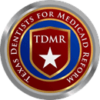A new study found that almost 81% of antibiotics prescribed for infection prophylaxis before dental visits were unnecessary.
In the first such study to examine the appropriateness of U.S. dentists’ prescriptions of prophylactic antibiotics, the researchers reported that just under 21% of more than 91,000 dental patients had a cardiac condition at highest risk of adverse outcomes from infective endocarditis, yet more than 168,000 prescriptions were written for U.S. dental patients between 2011 and 2015 (JAMA Network Open, May 31, 2019).
“Although prescribing is slowly improving, the high proportion of antibiotics that were found to be unnecessary in our study is worrisome,” wrote the authors, led by Katie Suda, PharmD. Suda is an associate professor of pharmacy systems, outcomes, and policy at the University of Illinois at Chicago College of Pharmacy.
Highest risk
Dentists are the top specialty prescriber of antibiotics, according to a 2015 study in Clinical Infectious Diseases (May 2015, Vol. 60:9, pp. 1308-1316) cited by the authors of the present study.
Antibiotics before dental procedures are recommended only for treating patients with cardiac conditions at the highest risk of adverse outcome from infective endocarditis, they wrote. The guidelines for the use of antibiotics for preventing infective endocarditis and prosthetic joint infections were revised in 2007 and 2013 because of inadequate evidence on the effectiveness of antibiotic prophylaxis, lack of an association between endocarditis and joint infections and dental care, and the risk of antibiotic-associated adverse events, the authors noted. So the researchers wanted to find out if antibiotics were prescribed appropriately for infection prophylaxis before dental procedures.
“Although prescribing is slowly improving, the high proportion of antibiotics that were found to be unnecessary in our study is worrisome.”
—Katie Suda, PharmD, and co-authors
They conducted a retrospective cohort study of U.S. dental visits with hospital admittance or extraoral infection 14 days before antibiotic prophylaxis from 2011 to 2015, which were linked to medical and prescription claims from 2009 to 2015. They looked at the presence or absence of cardiac diagnoses and dental procedures that manipulated the gingiva or tooth periapex.
From 2011 to 2015, antibiotic prophylaxis was prescribed for more than 168,400 dental visits for more than 91,430 patients with commercial dental insurance in the U.S. More than 57% of these patients were female, and the median age of all patients was 63 years.
Most dental visits were classified as diagnostic (70.2%), preventive (58.8%), or both. Only about 21% of visits were to treat a patient with a cardiac condition at the highest risk of adverse outcome from infective endocarditis.
“Per guidelines, 80.9% of antibiotic prophylaxis prescriptions before dental visits were unnecessary,” the authors wrote.
Of the antibiotics prescribed, clindamycin was more likely to be prescribed than amoxicillin, the researchers found.
Public health implications
The authors noted some specific limitations of their study. Their research only included patients with commercial dental insurance, which may underrepresent patients with Medicaid and Medicare benefits. In addition, while the prescriptions cannot be linked directly with the healthcare encounter or prescriber, the likelihood that an antibiotic was prescribed for infection prophylaxis was increased by searching for prescriptions of two days or fewer. They noted that antibiotic prescriptions for oral infections are likely to be for three or more days.
The researchers concluded by stating that their findings may have important public health implications.
“These findings are concerning because dentists prescribe a significant proportion of antibiotics and are the top prescribers of clindamycin in the United States,” the authors wrote.
Source: Study finds U.S. dentists prescribe too many antibiotics / DrBicuspid.com

